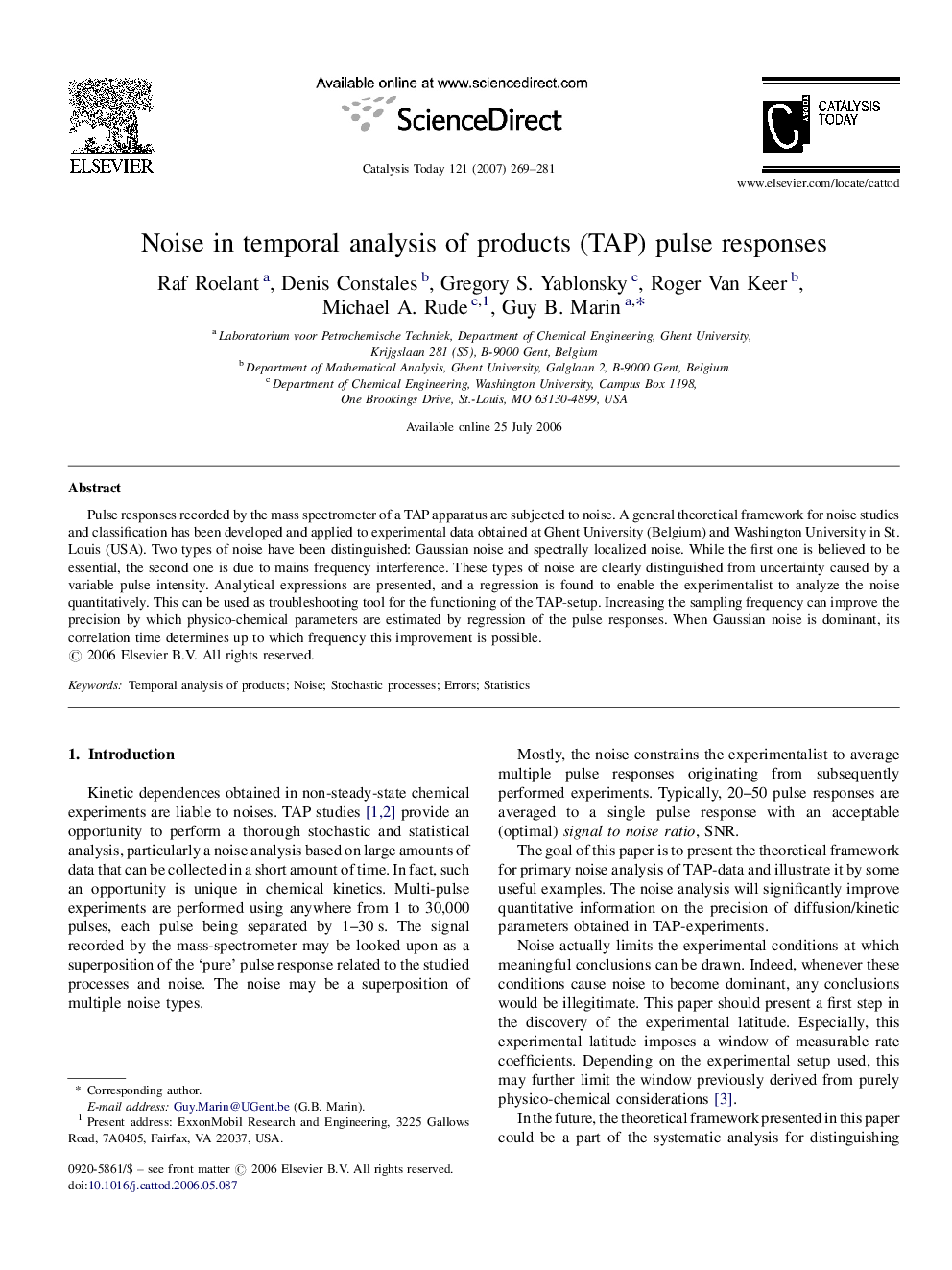| Article ID | Journal | Published Year | Pages | File Type |
|---|---|---|---|---|
| 58472 | Catalysis Today | 2007 | 13 Pages |
Pulse responses recorded by the mass spectrometer of a TAP apparatus are subjected to noise. A general theoretical framework for noise studies and classification has been developed and applied to experimental data obtained at Ghent University (Belgium) and Washington University in St. Louis (USA). Two types of noise have been distinguished: Gaussian noise and spectrally localized noise. While the first one is believed to be essential, the second one is due to mains frequency interference. These types of noise are clearly distinguished from uncertainty caused by a variable pulse intensity. Analytical expressions are presented, and a regression is found to enable the experimentalist to analyze the noise quantitatively. This can be used as troubleshooting tool for the functioning of the TAP-setup. Increasing the sampling frequency can improve the precision by which physico-chemical parameters are estimated by regression of the pulse responses. When Gaussian noise is dominant, its correlation time determines up to which frequency this improvement is possible.
